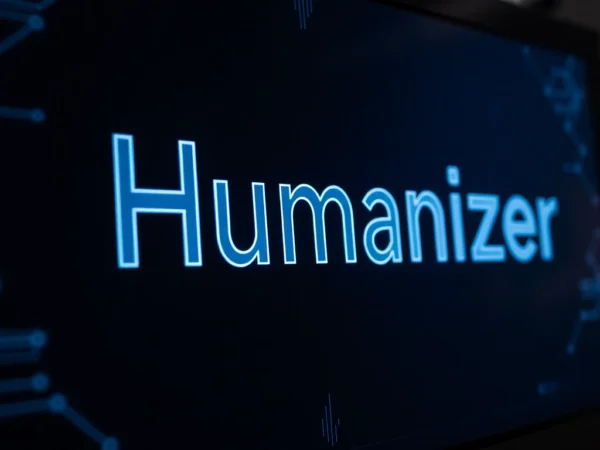Master the Art of Differentiating: Human or Not AI Challenge for Discerning Minds
Understanding the Human or Not AI Game: Concepts and Mechanics
In an age where artificial intelligence (AI) is rapidly advancing and permeating every facet of our daily lives, the ability to discern between human and machine has become a fascinating and essential skill. The human or not game represents a compelling frontier in this exploration. It is more than just an entertainment; it’s a social experiment, a test of perception, and a window into the future of human-computer interaction. This section thoroughly dissects what the Human or Not AI game is, why it holds relevance today, how it functions from a practical standpoint, and explores the cutting-edge technologies underpinning its operations.
What Is Human or Not and Why Is It Relevant Today?
The Human or Not AI game is an interactive social platform designed to challenge players’ ability to differentiate between responses generated by artificial intelligence and those crafted by humans. At its core, the game simulates a simplified version of the Turing Test—a concept introduced by Alan Turing in 1950 to evaluate a machine’s ability to exhibit intelligent behavior indistinguishable from that of a human. Unlike traditional Turing Tests confined to academic or industrial research, Human or Not directly engages everyday users, making the challenge accessible and pervasive.
In today’s digital landscape, AI models like GPT-4 and other sophisticated language generators have achieved remarkable realism, often blurring the lines between human and machine. From customer service chatbots to AI-driven content creation, these technologies influence numerous sectors. The relevance of the Human or Not game lies in its ability to serve as both a playful gauge and a critical educational tool, highlighting AI’s capabilities, limitations, and the subtle nuances that define human communication.
Furthermore, as AI systems become more embedded in social media, online education, and virtual assistants, developing an intuitive sense of AI detection enhances digital literacy. The game fosters awareness and critical thinking—two crucial skills in a digitally connected world increasingly shaped by AI technologies.
How the Game Works: Step-by-Step Guide to Playing
Participating in the Human or Not game is straightforward yet engagingly challenging. The process revolves around a simple core mechanic: a two-minute conversation. Here is how it operates:
- Initiate a Conversation: The player visits the platform and starts a chat session with an anonymous partner. This can be a human or an AI bot, randomly assigned.
- Engage in Dialogue: Spend approximately two minutes exchanging messages. During this period, players should actively listen and analyze responses, paying attention to linguistic cues, tone, and conversational behavior.
- Make an Educated Guess: After the communication window closes, the player is prompted to classify their partner as either a human or an AI.
- Reveal and Score: The platform reveals the actual identity, and players receive feedback on their accuracy. Over time, this generates valuable insights into AI response patterns and human conversational traits.
This process is repeated with different partners, and the game’s design encourages players to refine their detection skills with each round. The simplicity of the process masks the depth of cognitive effort needed, especially as AI models become more sophisticated.
Key Technologies Behind the Social Turing Test
At the heart of Human or Not’s realism are advanced AI technologies. These systems leverage machine learning, natural language processing (NLP), and deep neural networks to produce responses that can often mimic human variability and nuance convincingly. Prominent among these are models like GPT-4, which possess capabilities such as contextual understanding, sentiment analysis, and natural phrasing.
Moreover, the platform utilizes a robust tech stack including analytics tools like Amplitude to monitor user engagement and AI performance, and Webflow for seamless, responsive web design. The integration of these technologies ensures that the game remains fluid, secure, and scalable—capable of accommodating thousands of concurrent players worldwide.
Behind the scenes, continuous model training and refinement improve the AI’s fluency and diversity of responses while fostering the development of detection strategies among players. This creates an evolving ecosystem where AI models learn from user interactions, and humans enhance their detection intuition.
Analyzing Responses: Telltale Signs of AI or Human Behavior
Recognizing whether you’re chatting with a human or AI involves keen observation. Humans tend to exhibit inconsistencies, emotional nuances, and cultural references that AI systems may struggle to replicate perfectly. For example, AI responses sometimes lack genuine emotion, may overuse formal language, or produce subtly repetitive phrasing. Conversely, AI may generate surprisingly coherent answers, especially when prompted with straightforward questions, challenging players to identify subtler cues.
Analyzing language complexity, contextual awareness, and response timing can reveal telltale signs. AI-generated responses might lack deep personal insight or exhibit oddities like overly generic statements or unnatural phrasing. Recognizing these patterns is essential for sharpening your detection acuity.
Effective Questioning Techniques for Better Identification
To enhance your chances, employ questions that are context-dependent or emotionally charged, challenging AI’s capabilities. For example:
- Ask about personal experiences or opinions that require genuine feelings or subjective perspective.
- Introduce humor, sarcasm, or cultural references that AI models may not interpret accurately.
- Use delayed follow-up questions to assess consistency in responses.
These approaches exploit AI limitations, aiding in more accurate differentiation.
Common Challenges and How to Overcome Them
As AI improves, detection becomes increasingly difficult. Challenges include AI’s ability to mimic human errors or emotional depth and the ambiguous responses that can deceive even experienced players. Overcoming these hurdles requires:
- Continuous learning and staying updated on AI capabilities.
- Practicing with diverse question sets to recognize evolving response patterns.
- Developing patience and critical judgment, avoiding snap conclusions based solely on superficial cues.
The Psychology and Technology of AI Detection
Understanding AI Response Patterns and Limitations
AI models are trained on vast corpora of human language, enabling them to generate fluid responses. However, inherent limitations persist:
- Limited true understanding: AI does not possess consciousness or genuine emotion.
- Contextual narrowing: AI can lose track over lengthy conversations, leading to inconsistent answers.
- Repetition and framing biases: AI may fall into patterns or default responses when unsure.
Recognizing these patterns can guide detection strategies. For instance, abrupt shifts in tone or overly generic replies often betray AI origins.
The Role of Critical Thinking and Intuition
While technological insights are invaluable, human intuition remains a powerful tool. Subtle inconsistencies, emotional cues, or cultural misalignments frequently serve as indicators. Combining technical knowledge with gut feelings enhances accuracy—an essential prowess in increasingly AI-saturated environments.
Impact of AI Advancements on Human or Not Accuracy
As models like GPT-4 improve, the difficulty of distinguishing AI from human counterparts escalates. This progress demands that players develop more sophisticated detection techniques, integrating AI literacy with psychological insight. Metrics indicate that human success rates in the game tend to decline as AI responds become more natural, pushing the need for continual adaptation.
How Playing Human or Not Benefits You and Society
Enhancing Digital Literacy and Critical Analysis
Engaging with the game sharpens your ability to discern AI-generated content, fostering digital literacy—an essential competency in our AI-driven world. Recognizing AI patterns helps prevent misinformation, enhances online safety, and promotes more thoughtful interactions.
Contributing to AI Development and Ethical Discussions
Player insights from the game can inform AI developers about shortcomings and strengths in current models. This feedback loop supports AI refinement and helps shape ethical standards—e.g., transparency, bias mitigation, and safe deployment. The game thus becomes part of a broader societal effort to manage AI responsibly.
Engaging with Innovation Safely and Responsibly
As AI continues to evolve, understanding its mechanics and limits encourages responsible usage. Players contribute to a culture of informed engagement, reducing fear and promoting innovation within ethical boundaries.
Getting Started: Tips and Resources for Enthusiasts
Easy Steps to Join the Human or Not Community
To begin exploring this exciting challenge:
- Visit the official platform at human or not.
- Create a free account if necessary or start a new chat session immediately.
- Dive into conversations, practice your detection skills, and track your success rate over time.
Recommended Practices for Frequent Play
Consistency and diversity are key. Adapt your questioning techniques, analyze response patterns regularly, and reflect on your successes and failures. Engaging with the community via social media or forums can provide valuable tips and shared experiences, further honing your skills.
Additional Tools and Learning Resources
Apart from the game itself, web resources, research papers, and AI trend analyses deepen understanding. Platforms like OpenAI’s blog, research journals, and online courses on NLP and AI ethics bridge the knowledge gap, empowering players to become more proficient in AI detection.










